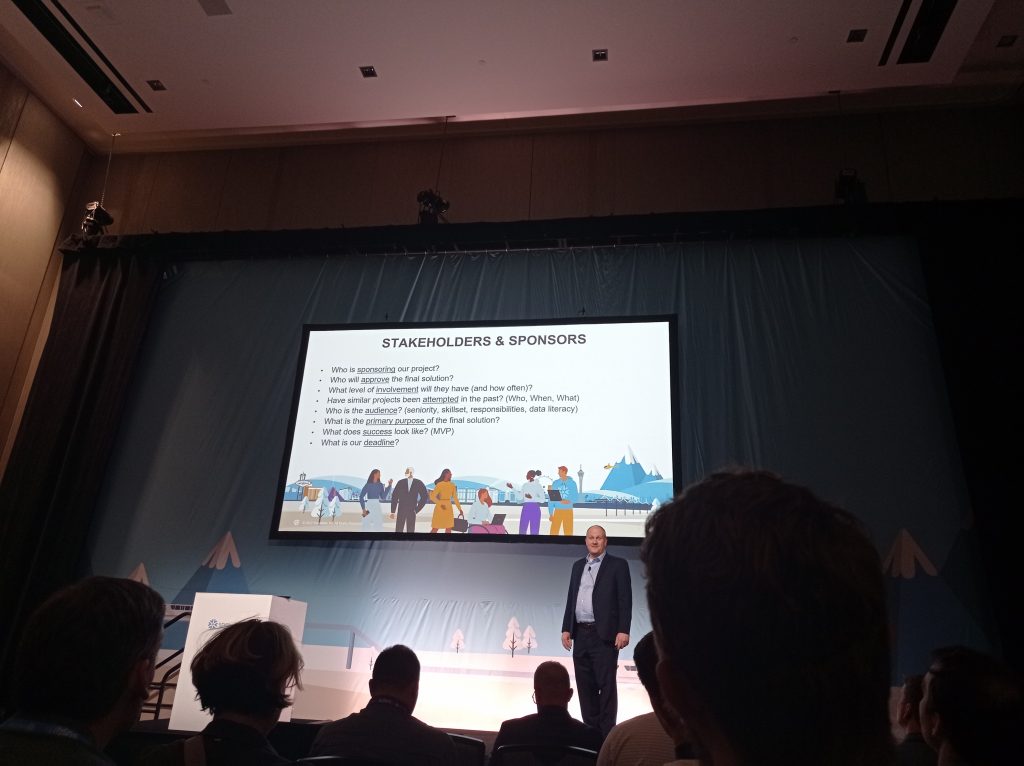First things first….
…should you attend Snowflake Summit?
Whether your goal is to get to know Snowflake better, to explore new Snowflake-related software options or to network, I think the Snowflake Summit is a good chance to do all of the above. The Summit offered a wide range of both hands-on labs and presentations for both beginners and advanced users. The location was beautifully curated in a snowy mountain ski resort style. Delicious food and drinks were served regularly, leaving space to walk around with a drink or join a table and chat with people.
If there was a downside to the conference, it must have been that some sessions would have needed a larger room as they were at full capacity well before their starting time, leaving people locked out of the room and annoyed.
Overall, it was a nice event that leaves me with more enthusiasm for Snowflake and a lot of swag, including a fluffly Snowflake teddy bear, two caps and five different t-shirts with nerdy slogans on top.
My two favorite sessions and what I learned from them
Among the many sessions available at the Snowflake Summit, I decided to split my time almost evenly between Tableau and dashboards related sessions on one hand and dbt related sessions on the other.
Snowflake + dbt
Of particular value was a two-hour long hands-on tutorial on how to get started with dbt and how to use it in conjunction to Snowflake. The tutorial is available on the Snowflake website, but it was very useful to have experts at hands for guidance and it definitely helped me speed up my understanding of both tools.
Driving Dashboard Adoption through Better Data Visualization and Design

My other favorite session, run by Senior Partner Sales Engineer Keith Smith, was an inspirational one. It didn’t provide as much new knowledge as the dbt lab did, but it left me with a renewed sense of enthusiasm for delivering beautiful and functional dashboards, and with some good reading recommendations.
Here are some of the tips from that session.
When developing a dashboard, always ask yourself:
- Goal: Does everyone involved share a common definition of success?
- Screens and devices: where will the dashboard be consumed?
- Data: have you gotten the data approved by stakeholders before presenting your design?
Alway check that a dashboard is
- Engaging
- Functional (fast, accurate)
- Informative
📚 Book recommendations
- Factfulness by Hans Roslin
- The Functional Art by Alberto Cairo
- Universal Principles of Design by William Lidwell
Thank you for reading! Feel free to check out my other blogs or my YouTube channel for more!

